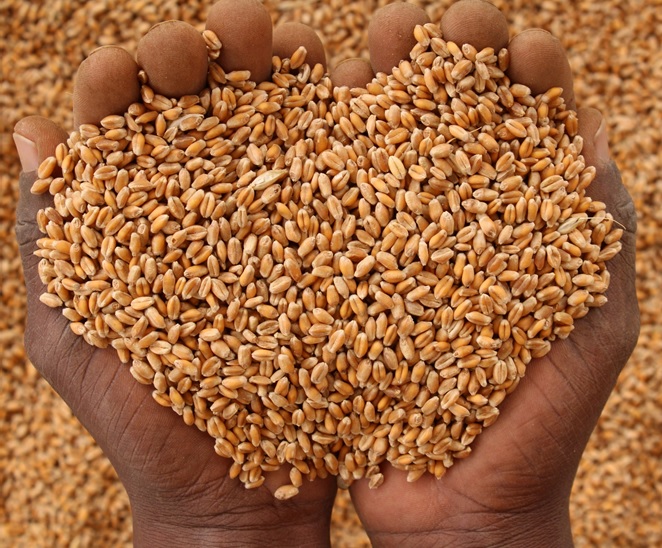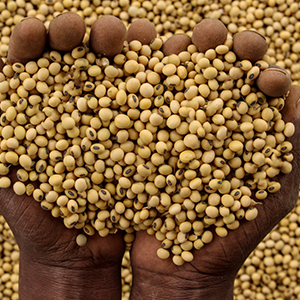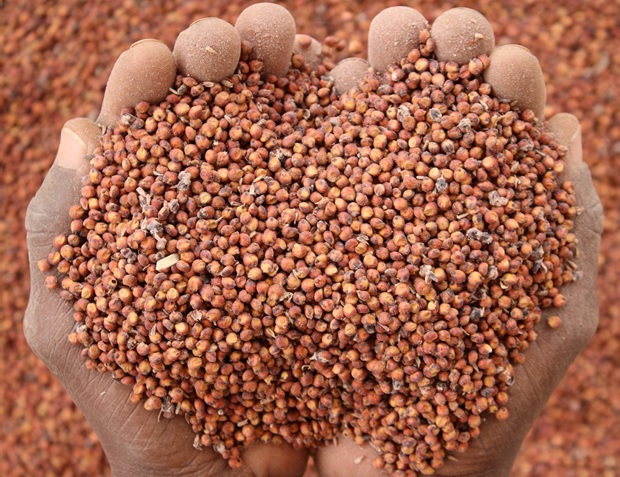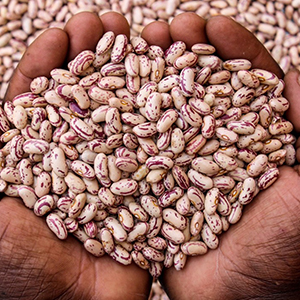Gocha/green mealie production is one venture with a very lucrative Return On Investment (ROI), which farmers can adopt in irrigation schemes, A2, A1, large and small scale farming sectors to enhance farm cash flows.
Gocha mealie as a venture follows a basic gross margin principle that if you invest a dollar you can get at least 3 fold return assuming best agronomic practices are followed. Normally the cost of production for gocha mealie averages up to $1,400 per hectare at full absorption (i.e. all variable costs incorporated e.g. fertilisers, seed, irrigation costs, electricity, labour to mention just the major variable cost drivers).
What do you get out of such an investment per hectare? That is a top-line question! If everything is done optimally, and farmers adopt GAPs (Good Agronomic Practices) as we strongly recommend, a minimum of 3,500 dozens of mealies per hectare can be realised, with each dozen fetching prices ranging from $1.20 to $2.50. It means in monetary terms a farmer can realise a minimum of $4,200 and up to $8,750 after a period of at most 4 months on a per hectare basis. This income can be used for wages, farm equipment maintenance, and summer cropping preparations among other day-to-day petty cash needs on the farm. This creates cash flow autarky (self-sufficiency) and spread on the farms.
I can imagine some A2 farmers in Mashonaland West, Central, East, Manicaland, Masvingo, Midlands and Matebeleland who are doing more than 20ha of gocha mealies (some even up to 40ha), A1 farmers doing 3-5ha, and irrigation scheme farmers doing 0.5ha! …Imagine the returns!
This is lucrative and rewarding! – isn’t it? It is really a big deal especially when everything is done optimally from varietal choice & preparation right up to harvesting and marketing. Ultimately the key is to produce long, fat, attractive and sellable cobs. I will give some agronomic considerations and tips for gocha mealie production in this article as being enunciated by the GAPs principle. The key principle for gocha mealie is growing appropriate hybrids under good management to obtain first grade green mealie cobs which can earn premium prices on the market. Generally we recommend staggering of gocha mealie plantings to stretch the selling window.
What is the optimum planting time?
Planting window is a very critical consideration when producing gocha mealie as farmers need to consider frost avoidance as it can burn the crop (at the early stages) and cause floral sterility and lead to unsellable small cobs. We recommend farmers to plant after frost occurrence! Generally the optimum sowing time is after the last week of July in the Highveld areas. In the Lowveld, where generally frost seldom occurs, farmers can capitalise and plant at anytime and get higher prices.
How important is land preparation?
We recommend soils should be prepared to a fine tilth to ensure good germination & emergence, and also for moisture conversation. Maize prefers well prepared seedbed with a depth of 25-30cm. To achieve this, farmers need to follow the conventional tillage procedure of ploughing, discing and rolling. However, we also recommend farmers to follow the conservational tillage techniques also known as zero or minimum tillage as another option.
Can one plant any hybrid?
The desired traits are a combination of sweet taste, long shelf life, slow dry down and large (long & fat) ears. Complimentary traits are high grain yield potential, large kernel size and colour (yellow or white), good popping and roasting ability. Leading varieties on the gocha mealie market are Seed Co’s SC727 and SC719-late white hybrids (popularly dubbed Cassa Banana on the green mealie market), SC608 – a yellow medium maturing hybrid (dubbed Fire Cracker on the green mealie market). SC637 (famously called Torai Mari) and SC533 are the other options in the medium and early white maturity groups. SC403 is generally favoured for its sizable cob, deep white kernels and a good shelf life. This short season hybrid has some great tolerance & resistance to Maize Streak Virus (MSV). It also offers farmers great options for a good green mealie cropping turnover per year.
Varietal choice is a key market consideration, as farmers risk getting ‘stuck’ with dozens of gocha mealies if they use other varieties than the above that are not preferred on the market. Other varieties include SC513 and SC529.
What is the optimum plant population for green maize?
Planting can be done by machinery or hand. We recommend farmers to calibrate their planters to achieve the optimum spacing for large (fat and long), attractive ears. We recommend a spacing of 90cm inter-row and 25-27cm & intra-row to achieve a population of up to 45 000 plants per ha. Under good management 95% of the total population should go to the premium grade for gocha market while the 5% can be dried for grain or other use. On a per hectare basis, the target harvestable population should be at least 3,400 dozens.
Always plant in fertile soil
Firstly, farmers MUST sample their soils for pH and fertility analysis. If there are any imbalances in the soil pH and fertility, they must be corrected promptly e.g. low pH is corrected by liming. Use of appropriate liming agents (dolomitic or calcitic lime) is recommended as this enhances fertiliser use efficiency. The optimum pH for maize is 5.2 – 5.8 on a Calcium Chloride scale.
Secondly, application of fertilisers is heavily recommended if we are to get good crop establishment and marketable cobs. The principle is to apply the right quantities of the right type of fertiliser at the right time and place. Seed Co recommends that fertilisation management should follow prescriptions from the soil analysis recommendations. However, the general recommendation for fertilisers is; Compound D {7:14:7} basal dressing (400kg/ha) at planting and top dressing (350-400kg/ha) at 4 weeks after emergence using Ammonium Nitrate or Urea. Top dressing can be applied by applicators, hand or the chola method (empty bag with a hole and a pipe protruding). It is also recommended for farmers to adopt high analysis blends as basal options. Split applications of top dressing fertilisers can be recommended in loose soils (with clay content of less than 15%) i.e. sandy and sand loamy soils.
Fertiliser application is essential for plant root development, leaf surface area expansion, cob development and filling, and ultimately productivity.
NB: All fertility management practices must be based on proper full soil analysis recommendations by approved laboratories. Machine (and hand/chola) calibrations are key for optimum crop establishment, proper use of chemicals and fertilisers and attaining budgeted yield levels.
Contact Seed Co Mudhumeni Mukuru, Agritex or equipment companies for assistance on calibrations of various accessories.
Moisture management has to be spot on!
This is a very crucial aspect in gocha mealie production. Irrigate to almost field capacity after planting and after day 5 follow through with enough to break the crust for good crop emergence. Remember good crop emergence and establishment is key for good stand count and harvestable cobs. It’s a game of numbers (of cobs/dozens/ha)! Irrigation scheduling should be based on soil type, rate of evaporation and crop stage. Generally a 25-30mm is enough on a 7-10 days irrigation cycle. Up to 600mm of well scheduled irrigation is required for a good gocha mealie crop.
Common enemies: Disease, pest and weed control
The most important disease for winter gocha mealie is Maize Streak Virus (MSV) spread by a leaf hopper vector, (Cicadulina Mbila). Seed Co recommends for farmers to dress their seed with imidacloprid (Gaucho, Cruzer & Poncho) at pre-planting. Imidacloprid is a systemic insecticide that acts as an insect neurotoxin with no toxicity to mammals & humans and very low eco and phytotoxicity. On the other hand, caterpillars are [delete a] catastrophe especially after crop emergence. We recommend pesticide sprays of Lambda or Karate after emergence for the control of the catastrophic caterpillars.
Seed Co strongly recommends the use of pre & post-emergence herbicides to ensure weed free fields in the early growth stages of the crop. For instance in maize, the field must be weed-free for the first 10-12 weeks of the crop cycle to ensure undisturbed and efficient water and nutrient uptake by the maize crop.
NB: Consult Agrochemical companies for more information on chemicals. Always read chemical labels carefully, use safe practices and adequate protective gear during application.
What are the harvesting and marketing tips?
Maize grown for green mealies should be harvested well before reaching physiological maturity. Preference with regards to the optimum harvesting window varies from market to market. Generically early dough stage (just after milk stage) is regarded as the best time for harvesting green mealies, which is about 3 weeks after flowering depending on variety. It is prudent to do market research 3 or 4 weeks before the intended harvest time. Customers in the market include , retailers, fresh produce markets like Misika in major cities and towns, Mbare Musika in Harare and individuals…
Author: John Basera.
 Zimbabwe
Zimbabwe Seed Co Group
Seed Co Group Botswana
Botswana Kenya
Kenya Malawi
Malawi Nigeria
Nigeria Tanzania
Tanzania South Africa
South Africa West & Central Africa
West & Central Africa Zambia
Zambia




